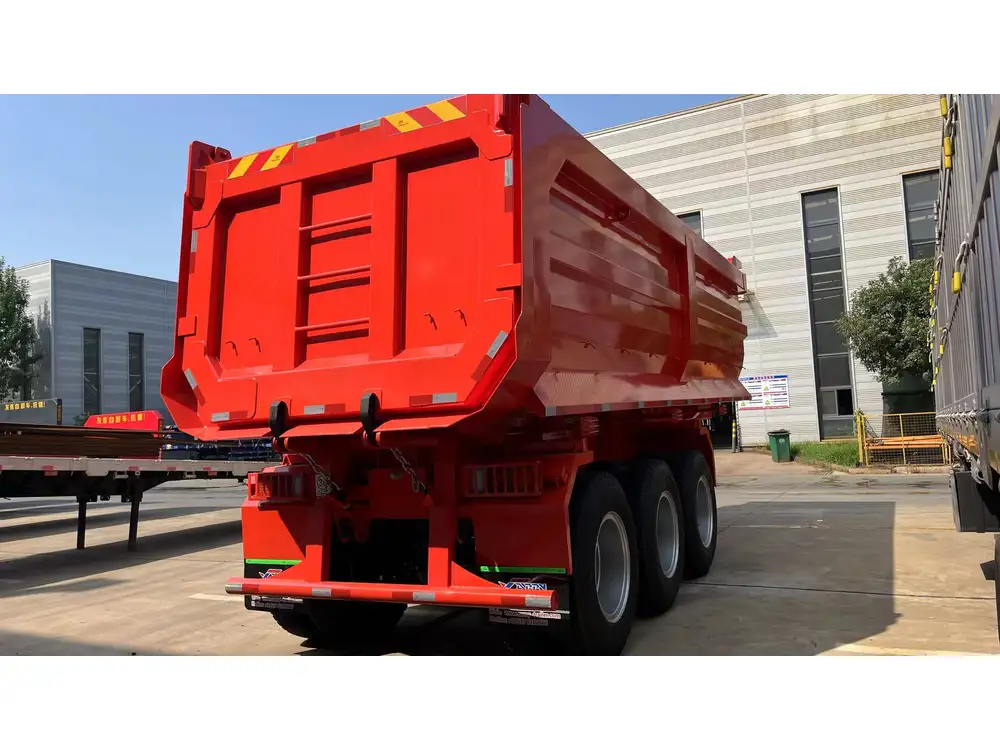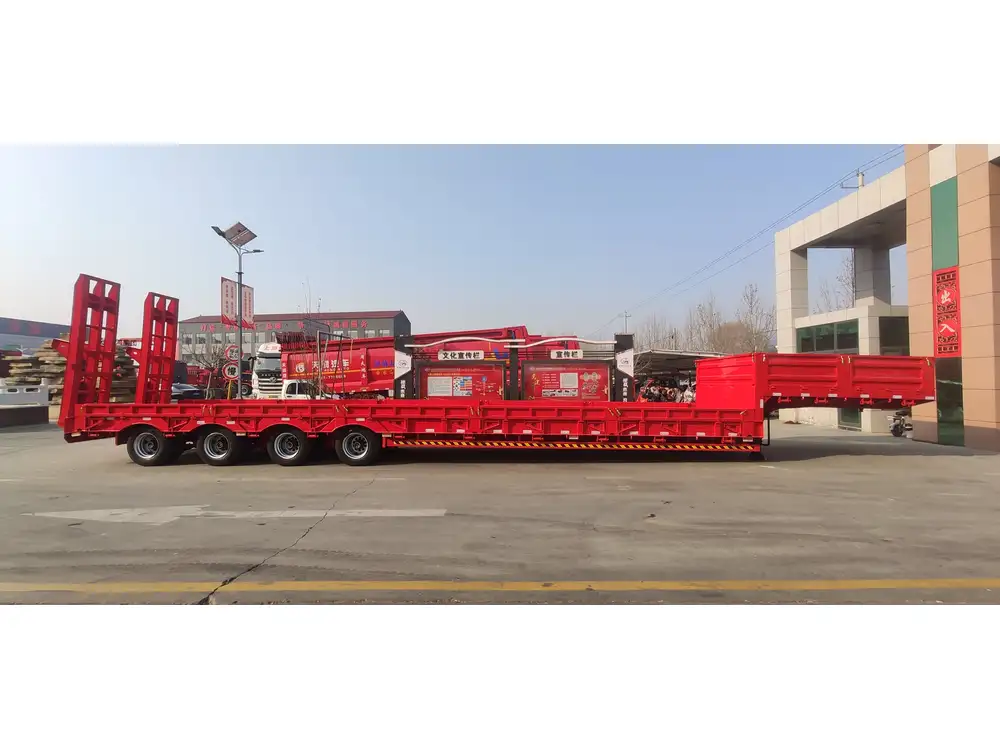When it comes to using a dump trailer, one of the most pressing questions is, “How many yards can it hold?” For professionals in construction, landscaping, or waste management, knowing the exact capacity of the trailer is critical for efficient operation and project planning. This detailed guide will dissect dump trailer capacities, explore various sizes, and provide insights into maximizing their usage effectively.
Understanding Dump Trailer Capacities
Dump trailers are versatile tools that come in a range of configurations and sizes. Their capacity can significantly influence your project workflow, whether you are hauling dirt, gravel, or construction debris.
Common Dump Trailer Sizes
Below is a table illustrating various dump trailer sizes and their standard yard capacities:
| Trailer Size | Approximate Capacity (Cubic Yards) |
|---|---|
| 5 x 8 feet | 1.5 – 2.5 yards |
| 6 x 10 feet | 3 – 4 yards |
| 7 x 14 feet | 5 – 6 yards |
| 8 x 14 feet | 6 – 8 yards |
| 8.5 x 20 feet | 10 – 12 yards |

Cubic Yards: The Measurement that Matters
A cubic yard is defined as the volume of a cube with sides of one yard each, amounting to 27 cubic feet. This measurement is crucial when calculating how much material a dump trailer can carry. Therefore, to convert the size of your trailer from feet to cubic yards, you can use the following formula:
[ \text{Cubic Yards} = \frac{\text{Length (ft)} \times \text{Width (ft)} \times \text{Height (ft)}}{27} ]Height Considerations
While length and width can give a good indication of capacity, the height of the load plays a significant role in determining how much material can be safely transported. Many dump trailers are designed to handle loads up to a certain height without compromising safety and stability. Depending on the material being transported, overly tall loads may impede visibility and increase the risk of tipping.
Factors Affecting the Yards in Your Dump Trailer
Multiple elements influence how many yards your dump trailer can safely haul:

Load Density
The type of material being moved is paramount in determining how many yards can be loaded into your trailer. Here’s a comparative analysis of different materials:
| Material | Approximate Weight per Cubic Yard |
|---|---|
| Topsoil | 1,200 lbs |
| Gravel | 1,500 lbs |
| Sand | 2,000 lbs |
| Concrete Rubble | 3,000 lbs |
Understanding load densities ensures you can maximize the trailer’s yard capacity without exceeding its weight limit—typically defined by the trailer’s manufacturer.
Legal Weight Limits
In addition to physical capacity, each trailer also has a legal weight limit defined by local and national regulations. Overloading your trailer not only risks structural damage but also results in fines and legal repercussions. Always consult the owner’s manual for precise weight capacities and ensure compliance with regulations.
Load Distribution
Proper weight distribution is critical for safe transport. Unevenly distributed loads can cause instability, leading to hazardous conditions while driving. Always aim to keep heavier materials closer to the trailer’s axles to promote better balance and control.

Calculating the Yards in Your Dump Trailer
Step-By-Step Calculation
When you’re ready to load your dump trailer, a calculated approach will yield the best results. Use this process to find out how many yards you can fit:
Measure the interior dimensions of your dump trailer’s bed. This includes length, width, and height.
Apply the cubic yard formula: [ \text{Cubic Yards} = \frac{\text{Length (ft)} \times \text{Width (ft)} \times \text{Height (ft)}}{27} ]
Consider load density and material weight, adjusting your estimates based on the material type.
Check local regulations for legal weight limits, ensuring compliance to avoid unnecessary fines.
Confirm weight distribution, making adjustments as needed to keep your trailer balanced.
Common Questions Related to Dump Trailer Capacity

How Many Cubic Yards of Mulch Can I Haul?
Depending on the size of your dump trailer, you can typically fit between two to six yards of mulch. It’s essential to account for density; mulch is relatively lightweight, allowing for larger volumes within the maximum weight limit.
What’s the Best Way to Load a Dump Trailer?
To optimize both space and weight distribution:
- Always load heavier materials first: Start with dense materials like stone and gravel, stacking lighter items on top.
- Fill evenly: Distribute materials across the trailer bed to avoid wobbling while driving.
- Secure your load: Use tarps or netting to keep materials in place and prevent cargo from spilling out during transit.
Can I Use My Dump Trailer for Non-Heavy Items Like Grass Clippings?
While dump trailers are perfect for heavy loads, they can also be used to haul lighter materials like yard waste, grass clippings, or leaves. Calculate yard capacity similarly but remember that lighter loads will allow for more volume without approaching weight limits.

Safety While Hauling Dumps
Safety should be a priority at all times. Here are some guidelines:
Pre-Trip Inspection
- Check tire pressure: Ensure all tires are inflated to the recommended levels.
- Inspect brakes and lights: Verify that all lights function correctly and brakes are in ideal condition.
- Ensure the load is secured: Properly tarp and tie down loads any time you head out.
Driving with a Dump Trailer
Remember the altered dynamics when towing a dump trailer:
- Take wider turns: The length of the trailer necessitates additional space while turning.
- Allow for stopping distance: Since weight can significantly affect stopping capabilities, maintain additional distance between your vehicle and others.
- Adapt to road conditions: Be particularly cautious on wet or slippery road surfaces as loaded trailers can be prone to sway.

Maximizing Dump Trailer Efficiency
Calculate & Optimize Route Planning
Efficient use of a dump trailer extends beyond load capacity. Conducting efficient route planning can save time and fuel. Consider:
- Multi-stop routes: If you’re delivering to multiple sites, plan stops efficiently to minimize backtracking.
- Time of day: Traffic can affect travel time; aim to travel during off-peak hours whenever possible.
Maintenance: A Long-Term Investment
Regular maintenance keeps your dump trailer in optimal condition, reducing the risk of breakdowns that can lead to costly downtime.
- Regular inspections: Check for wear and tear, making repairs as necessary.
- Lubrication: Keep all moving parts well-lubricated to ensure smooth function.
- Cleaning: Regularly clean the trailer bed to prevent residue accumulation that can add weight.

Conclusion
Understanding how many yards your dump trailer can hold is crucial for maximizing both efficiency and safety. By calculating capacity accurately, considering load density, and adhering to weight regulations, you can make informed decisions that save time and resources. Regular maintenance and smarter route planning further enhance your operational effectiveness, turning your dump trailer into a valuable asset for whatever project lies ahead. Whether you’re moving dirt for a landscaping job or clearing out debris after renovations, being informed and prepared ensures that each load is handled with precision and care.



